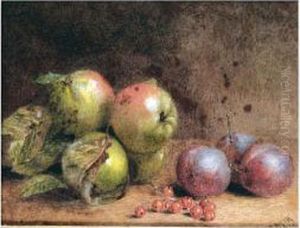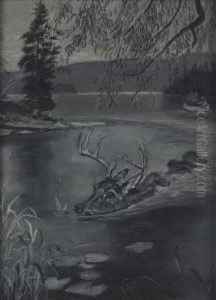J.W. Weir Paintings
Julian Alden Weir, commonly known as J. Alden Weir, was an American painter born on August 30, 1841, in West Point, New York. He grew up in a milieu that was profoundly attached to the arts; his father Robert Walter Weir was a well-known professor of drawing at the United States Military Academy in West Point and a respected landscape painter. This environment naturally inclined Julian towards an artistic career. He initially studied under his father before attending the National Academy of Design in New York City and later broadening his education and artistic perspective in Europe, particularly at the École des Beaux-Arts in Paris.
During his time in Europe, Weir was exposed to the works of the French Barbizon school and the then-emerging Impressionist movement, which initially did not appeal to his artistic sensibilities. He favored more traditional techniques and subjects early in his career. However, his style and preferences evolved after returning to the United States, where he began to incorporate Impressionist techniques into his work, particularly in his landscapes and domestic interior scenes. This shift was in part due to the influence of his close friends and fellow artists, including Childe Hassam and John Henry Twachtman, with whom he would later co-found the Ten American Painters, a group that sought to break away from the academic constraints of the art establishment and promote Impressionism in America.
Weir's contribution to American art is significant for his role in introducing and adapting Impressionist techniques to American subjects and landscapes. His works often depict scenes from his own life, including his family, his homes in Connecticut and New York, and the surrounding countryside. These paintings are characterized by a subtle palette, attention to light, and a gentle, intimate approach to subject matter, which set him apart from his contemporaries and underscored his unique interpretation of Impressionism.
Throughout his career, J. Alden Weir received numerous awards and honors, and his works were exhibited widely in the United States and Europe. He was also a member of several prestigious art organizations, including the National Academy of Design and the American Watercolor Society. Despite his initial reservations about Impressionism, he became one of its most adept practitioners in the United States, seamlessly blending European techniques with American themes and landscapes.
J. Alden Weir died on December 8, 1926, in New York City. Today, his legacy is preserved through his works housed in major museums across the United States, including the Metropolitan Museum of Art, the Smithsonian American Art Museum, and the National Gallery of Art. His life and art remain a testament to the dynamic exchange between American artists and European movements, and his evolution as an artist mirrors the broader shifts in American art from the late 19th to the early 20th century.

